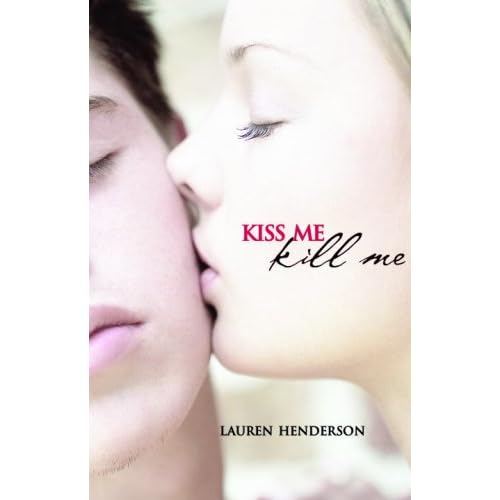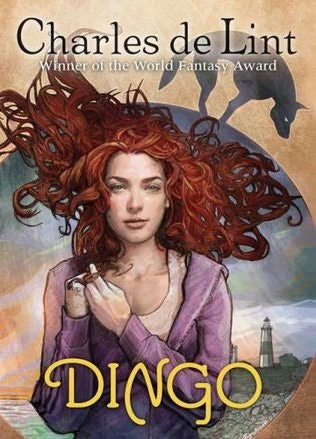
One of the ARCs I was most excited to get at ALA was White Sands, Red Menace by Ellen Klages, the sequel to The Green Glass Sea, which I loved. I’m not as crazy about this one, though there were still parts I loved, so I’ve divided my review into two parts, Tea Cozy-style. White Sands, Red Menace takes place two years after The Green Glass Sea. Dewey has been living with the Gordons since then; she and Suze are as close as ever; and the Drs. Gordon are both still hard at work on new, exciting, and terrifying technology.
The Good
The characters.
I really enjoyed reading more about Dewey and Suze. Each of them makes a new friend in this book and those friendships let the reader see a more complete version of the characters we already know. Dewey is still dealing with her dad’s death and trying to find her place in the Gordon family. She’s not quite a daughter/sister, but she’s much more than an acquaintance. And, in addition to her own uncertainty, she has to wonder how Suze feels about all of it, and whether she’ll feel edged out by Dewey’s closeness with Mrs. Gordon. In the last third of the book, Dewey has to deal with an even bigger family issue, but I don’t want to give anything away. I’ll just say that I was satisfied with how it ended.
Suze has a much bigger part in this book, and it was great to get more of her story. She’s such a great counterpart to Dewey – they’re both super talented, but in totally different ways, so it’s interesting to see how their projects complement each other. (I kept wanted to know more about the author and her background – I figured she was more of a Dewey, but her descriptions of Suze’s art projects make it sound like she’s no slouch in that department, either.) In this book, Suze is dealing with the same blended-family stuff as Dewey, but is also witnessing her parents’ marriage deteriorate and having to reevaluate her relationship with her increasingly absent father. Also, she makes friends with a Mexican and Native American girl from the Spanish-speaking part of town, and the things Suze realizes/wonders about her friendship with Ynez seem pretty relevant even 60 years later.
The Story.
As Ellen Klages says in the author’s note, the 1940s are a pretty ignored period – history classes mostly skip from the end of World War II to the 1950s, leaving out the time when this book takes place. I enjoyed getting a picture of life just before all of the “world of tomorrow” type gadgets and appliances of the 50s.
The historical story here is half recovery from the Bomb, half wonder and concern about the V-2 rockets that Werner Von Braun is helping the Alamogordo scientists build. Mrs. Gordon (who I love, by the way), has been writing letters trying to reveal the truth about the effects of the Bomb and motivate people to pursue peace. Mr. Gordon (yes, I know they’re both Dr. Gordon, I’m just using Mrs. and Mr. to distinguish) is excited about the possibility of using rocket technology to develop better weapons and to ensure that the Russians aren’t the first ones in space. Mrs. Gordon thinks that the arms race is just going to get the whole world nuked, Mr. Gordon thinks she is being naïve in her pursuit of protective legislation.
However, the bulk of the story, like in The Green Glass Sea, is mostly the family relationships and living in a time when the space race is starting and the nuclear arms race is going on in the background. The things that Suze and Dewey are dealing with are, naturally, not much different than teenagers at any other time.
The Not-So-Good
The language (and the Language) kind of troubled me. Some of the dialog felt stilted – either unnatural syntax or unnatural speeches. There were a few too many times that Dewey says something at a strange time seemingly just to prove that she’s still smart. Or sentences that go on too long for how most people speak. Or speeches that seem unnaturally long in an “I have a lot of information to give you, so I’ll just have this character say it all to another character” kind of way. I’ve certainly seen worse in other books, but there were some here, too.
There were a lot of hells, damns, and pisses, and most of them seemed unnecessary, especially in a book that says it’s for 10 year olds. When it came from an adult, it sort of set the mood, but when it came from Dewey or Suze, it sort of seemed like the author didn’t know how to write kids’ dialog. And Language doesn’t bother me, but I could imagine a parent getting upset about the frequency here. We'll be putting it in YA Fiction, while TGGS is in Junior. What bothered me more was the combination of Dewey and Suze’s casual swearing and a lot of their other slang that struck me as anachronistic. I should have marked them as I came across them, but didn’t. Some of the ones I can find just flipping through, though: “That was a pretty nifty solution, Suze thought. Pretty damn nifty.” And “Suze looked, then smiled. ‘That cooks with gas! It’s just got a thicker sole!’” I don’t know. I guess “nifty” and “that cooks with gas” could be appropriate slang, but those, plus the random "damn" feel weird to me. Thinking “that cooks with gas?” kind of took me out of the story. Also, a work friend said that she was bothered that they used “lame” to mean “pathetic” in The Green Glass Sea. I didn’t catch it in that book, but I did catch it in this one, and I agree – that’s a much more recent usage of that word.
And, I don’t know if it was that after some of the language things, I was just looking for anachronisms, but it seemed like there was an awful lot of soda-drinking. Didn’t kids in the 40s drink, like, milk at home and just get their sodas at the soda fountain? It seemed like in every scene Suze and Dewey were opening the fridge and pulling out a Pepsi. *shrug* I didn't live at the time, so I guess I don't know.
One more kind of nitpicky thing: the title seems strange to me. I definitely get the White Sands part, but the Red Menace doesn’t seem to be present at all. If anything, it’s more still dealing with the Nazis than Communists.
Mostly, though, if you liked The Green Glass Sea, you’ll like this one. It’s very true to the characters and it’s fun to see how some of the things started in TGGS play out.
 From the Inside Flap:
From the Inside Flap:




















